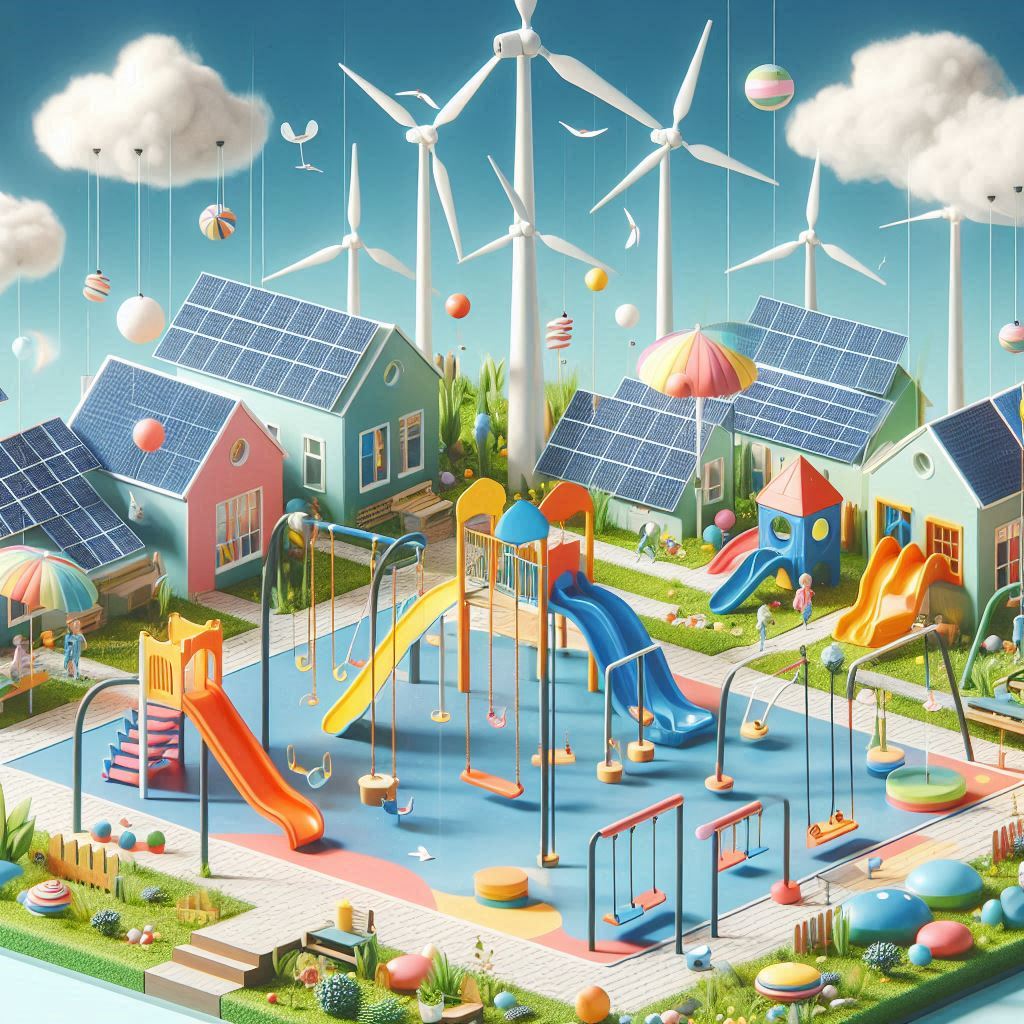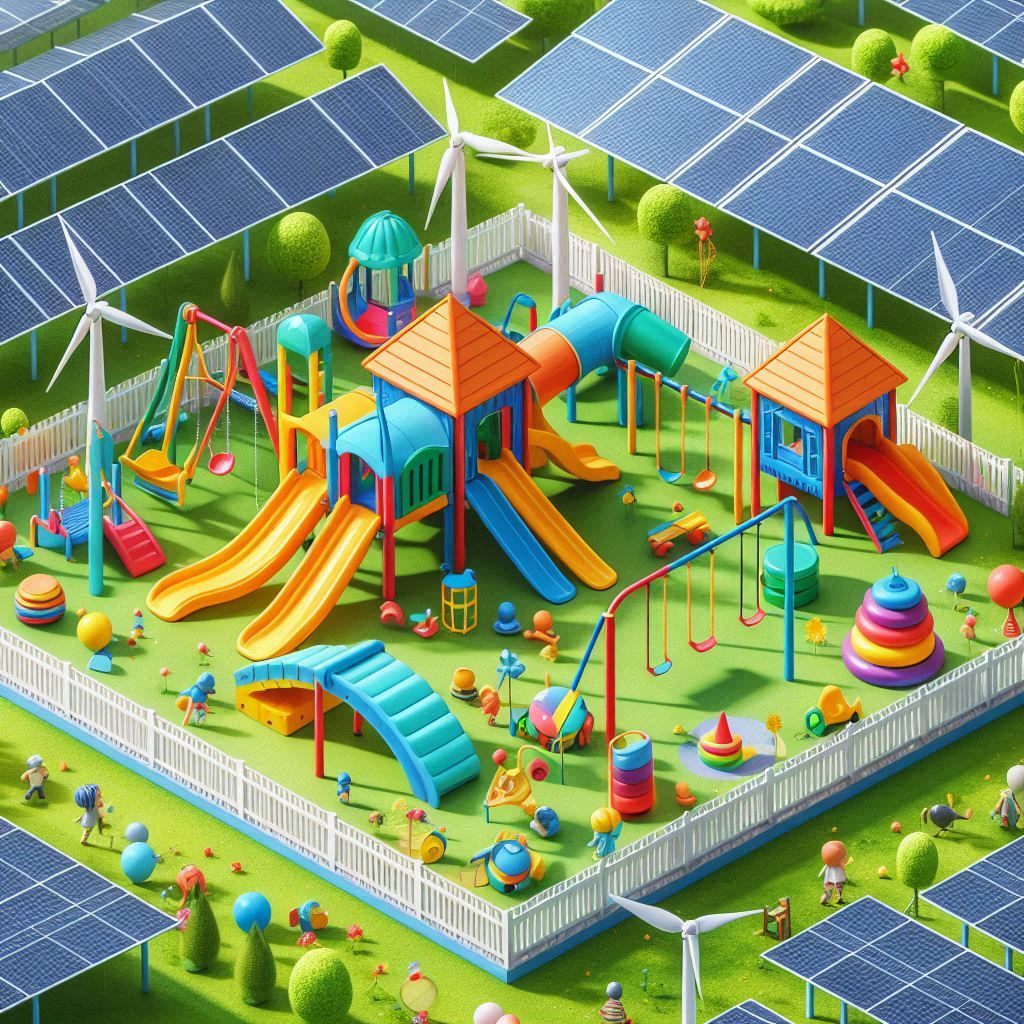
Energy-Generating Playgrounds are a creative twist to our everyday concept of play spaces. Imagine a place where kids’ laughter and endless energy translates into lighting up the park’s street lamps or charging mobile devices. Exciting, isn’t it?
You take your kids to one of these Energy-Generating Playgrounds, and every time they hop onto the seesaw, take a swing, or spin around on the merry-go-round, they’re actually powering up nearby park amenities.
The Lowdown on How It Works
Energy-Generating Playgrounds aren’t a product of magic but remarkable engineering. The equipment in these parks is fitted with special technology to tap into kinetic energy. Let’s break it down: kinetic energy is the energy an object possesses due to motion. When kids move and play, they generate loads of this energy, which typically gets wasted. But this new playground tech captures it.
Through electromechanical systems, the kinetic energy from bouncing, spinning, and swinging is converted into electrical energy. For instance, when a child steps on certain types of playground mats, pressure is applied, leading to the creation of electric currents. These currents are then stored in batteries or fed directly into the grid powering park amenities or even adjacent buildings.
Cool Equipment That Generates Energy
Different playground equipment features unique kinetic energy-harvesting systems. Swings, merry-go-rounds, see-saws, and even climbing frames can be modified to produce electrical power.
Swings: Energy Generation In Mid-Air When kiddos pump their legs to go higher, the motion is harvested and converted to electricity. Engineers incorporate this with generators and flywheels placed discreetly in the earth beneath the swing. The natural back-and-forth motion gets stored and converted into electric power.
Merry-Go-Rounds: Spinning Fun with a Purpose Each time a child pushes one of these, it activates a dynamo—a sort of mini generator—which creates electricity as it spins. This power can be used immediately or stored in a battery pack for later.
Seesaws: Simple Yet Effective This classic playground piece can be equipped with generators that transform the up-and-down motion into energy. The innovation lies beneath the seat where mechanical parts work seamlessly to convert kinetic energy to electrical.
Interactive Climbing Frames Another favorite, these climbing frames incorporate kinetic pads. When kids press their weight against these pads, they create electric currents that are collected, pooled, and directed to power sources.
Transforming Playgrounds and Communities
Now, could you imagine the broader implications of Energy-Generating Playgrounds? This concept offers much more than just upgraded play areas. Consider a park that’s self-sustaining, off-the-grid, and eco-friendly.
Communities benefit immensely from reduced electricity costs in maintaining park amenities. Instead of depending on traditional power sources, these parks help communities conserve energy and potentially lower operational expenses. Plus, it’s educational—a fun way to introduce kids to renewable energy concepts and sustainability, emphasizing the importance of alternative sources of power in our day-to-day lives.
Moreover, the flexible applications of this technology mean it’s an adaptable solution for communities large and small, urban or rural. If a small rural community sets up an Energy-Generating Playground, it might light up their town square without relying heavily on external electricity sources. In urban areas, parks could be partially self-sustaining despite the higher energy demand.
Real-World Applications and Case Studies
A few real-world implementations of these playgrounds have already begun popping up around the globe. One noteworthy instance is a playground in the Netherlands known for its sustainable energy approach. The designers incorporated swings and seesaws and a full suite of kinetic energy-generating equipment, resulting in significant energy savings.
Another fascinating example is seen in the UK’s Pavegen system, integrated into playgrounds, school hallways, and public parks. Pavegen tiles convert footsteps into energy, emphasizing how simple human activities can produce significant power. These setups have more than just environmental advantages—they also offer a sense of local pride and achievement, promoting innovative thinking and community ownership.
Policy Integration and Future Prospects
As cities pursue sustainable planning, incorporating kinetic energy-harvesting playgrounds into public spaces could become a standard strategy. Local governments could mandate that new play areas include energy-generating equipment, fostering private-public collaborations and driving technological advancements. This aligns with broader goals of reducing carbon footprints and enhancing the sustainability of urban environments.
Гrban planners and environmentalists are likely to increasingly advocate for such playgrounds. These advocates understand the dual benefits of creating recreational spaces that also contribute to energy production. Playgrounds equipped with kinetic energy-harvesting technologies can harness the energy generated by children and adults as they play, converting physical activity into usable electrical power. This power can be used to light the playgrounds, charge devices, or feed back into the local grid, providing a tangible benefit to the community.
Technological advancements will play a crucial role in this transformation. Tech companies specializing in energy-harvesting systems are expected to continually refine their products, making them more efficient, affordable, and user-friendly. Innovations could include more sensitive sensors, durable materials capable of withstanding harsh weather conditions, and improved energy storage solutions.
Challenges and Overcoming Them
Sure, Energy-Generating Playgrounds sound perfect all around, but as with any new technology, they come with a set of challenges. One of the key concerns lies in the initial investment—that high-tech equipment isn’t cheap. Then there’s the maintenance, which requires specialized know-how.
However, communities and municipalities can look to innovative funding solutions, like grants focused on sustainable projects, or investment from eco-conscious corporations. Maintenance skills can be nurtured through targeted training programs—perhaps even establishing local courses to ensure the playgrounds keep functioning optimally.
The durability of playground equipment needs rigorous testing. Kids are unpredictable and extremely active, meaning the apparatus must withstand extreme wear and tear. Engineers are continually enhancing materials and design to create tough, long-lasting, and safe playground gear.

